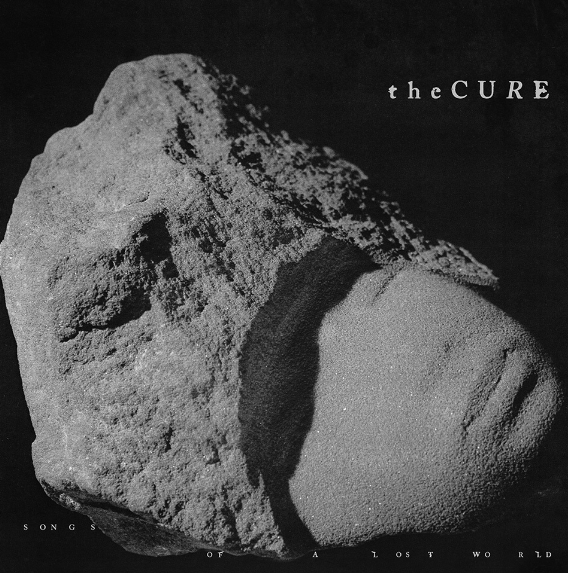
Legendary goth band The Cure returned from a 16-year hiatus with its newest album, “Songs Of A Lost World,” which was released on Friday.
The Cure was founded in 1976 and has since existed as an ensemble cast led by frontman Robert Smith. Smith is the one constant in a lineup that has seen decades of change. The vocalist, guitarist and Siouxsie and the Banshees alum is the only performer in The Cure to feature on every album and has defined the group’s sound with his distinct performance and wardrobe.
Often found dressed in black with messy dark hair, Smith and The Cure inspired the United Kingdom’s burgeoning goth subculture. Lol Tolhurst, a founding member of The Cure, wrote in his book “Goth: A History” that the goth style of music can really only be attributed to songs that feature “love and death” at the same time.
“The ideas are generally about the invisible and internal in life more than the external and visible,” Tolhurst said.
Smith was never apt to cling to labels, however, and he adamantly rejected the idea that The Cure was a “goth band.” The group experimented with pop and psychedelic sounds throughout the ‘90s and early 2000s, ending with its 2008 release “4:13 Dream.” The album was met with positive reviews, but the band fell apart after touring the project.
During the 16-year gap, Smith continued to perform live with The Cure despite a lack of releases. This new rendition of the band featured Smith along with bassist Simon Gallup, keyboardist Roger O’Donnell, percussionist Jason Cooper and guitarist Reeves Gabrels.
After years of teasing new music, The Cure finally unveiled “Songs Of A Lost World” after it was initially slated to release in 2019. The album, composed entirely by Smith, departs sharply from the poppier sound that defined the band’s work in the decade before its hiatus. “Songs Of A Lost World” is a dramatic, orchestral take on the gothic rock style that The Cure pioneered early in their career.
“Songs Of A Lost Work” begins with the dramatic opener “Alone,” which features a chorus of guitars and strings doused in reverb. Smith provides a catchy guitar melody that cuts through the noise and delivers some of his most biting and depressing lyrics to date: “We toast with bitter dregs to our emptiness.”
Strings remain a constant feature of the album’s instrumentation, more so than in any of the band’s previous work. The album’s second track, “And Nothing is Forever,” forgoes guitar entirely during an introduction scored entirely by piano and orchestra, which builds to a euphoric crescendo with drums and distorted guitar. As with the rest of the album, The Cure takes great pains to ensure that every verse is met by proper anticipation, even if the wait for the musical payoff can occasionally feel overlong.
“Songs Of A Lost World” shines in its densest moments where guitar lines intermingle with Smith’s soaring vocals and ornate composition, such as in the climax of “And Nothing is Forever.” Here, Smith captures the essence of gothic style, singing appropriately of love and death: “If you say we’ll be together / If you promise you’ll be with me in the end.”
Later in the album, The Cure diversifies its sound by adding in new twists, like the accordion dirge on “Warsong.” Despite being a slow song — even by this album’s standards — “Warsong” drives itself forward through intensely thumping percussion and loud scrapes of guitar strings, evoking a youthfulness reminiscent of the band’s similarly named ‘90s hit, “Lovesong.”
Another surprise is the pure energy on the very next song, “Drone:Nodrone.” The song is led by a funky bassline, twinkling synths and a manic guitar performance. Smith also leans more into the screamy rock of Nine Inch Nails in his vocal performance, shouting about his paranoia of surveillance over the rocking instrumental.
“Drone:Nodrone” also highlights the skills of the mixing engineers that brought this album together. Every bit of these songs sounds out with clarity, from the vocals to the rhythm section to the orchestra, even as the layers stack up. Especially in an energetic song like this, being able to hear the palpable rage of Smith’s performance while also hearing the complexity of his accompaniment is a cathartic experience.
The last track on this album, “Endsong,” is an opus worthy of its 10-minute length. It builds to its dramatic climax by layering different guitar lines over and over until they culminate in one final ballad from Smith.
In this last performance, he reiterates the weight of his own age, being 65 at the time of the album’s release. Reminiscing on the moon landing he saw when he was 10, he laments his loss of youth and innocence.
“It’s all gone, it’s all gone / Left alone with nothing at the end of every song,” he sings as the album draws to a baleful close.
Without question, “Songs Of A Lost World” was worth the wait. The entire project drips with care and artistry, from the intricacies of its immaculate engineering to the soaring heights of its orchestration. The Cure had a vision in mind when it set out to record this album and executed upon it with exacting precision.








